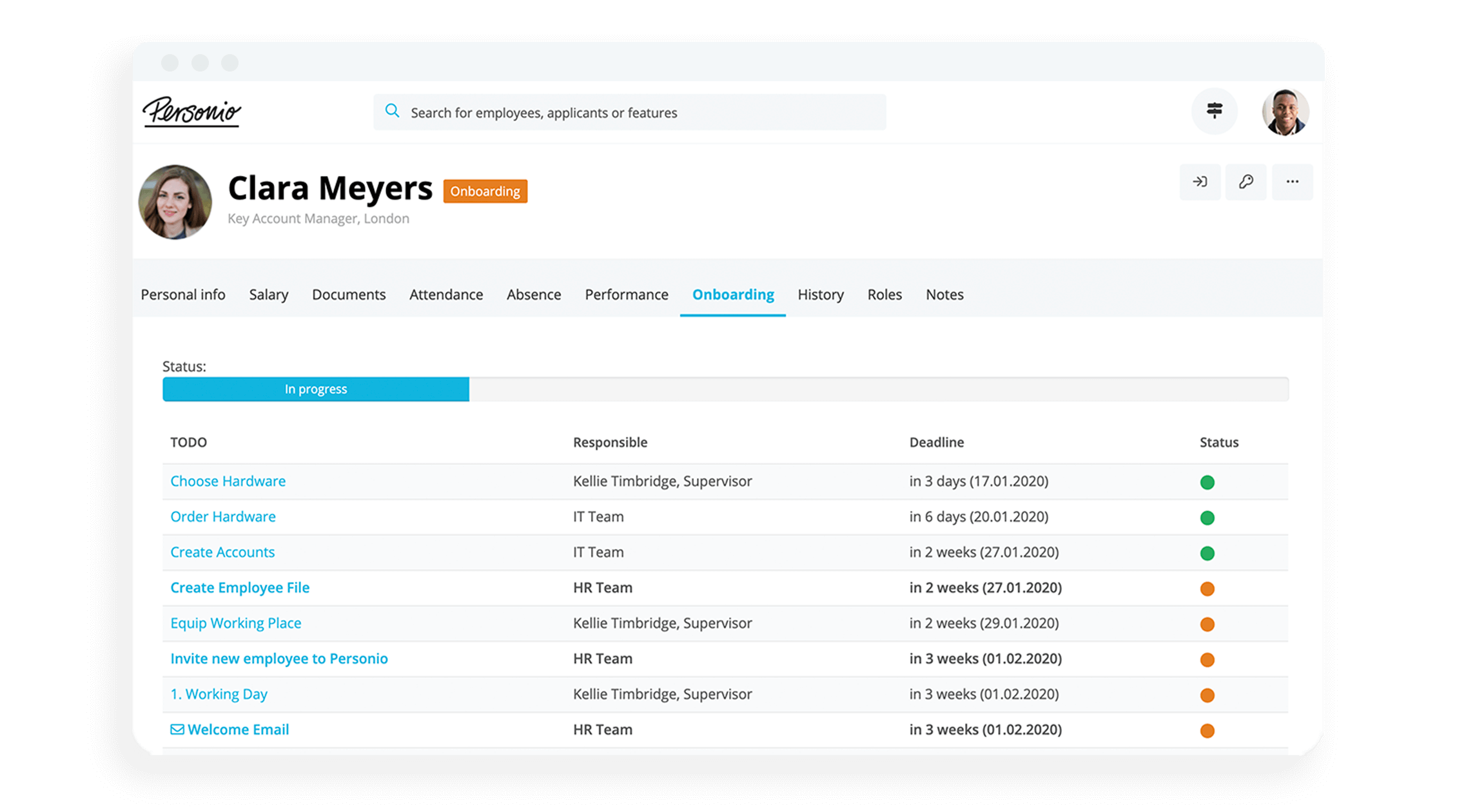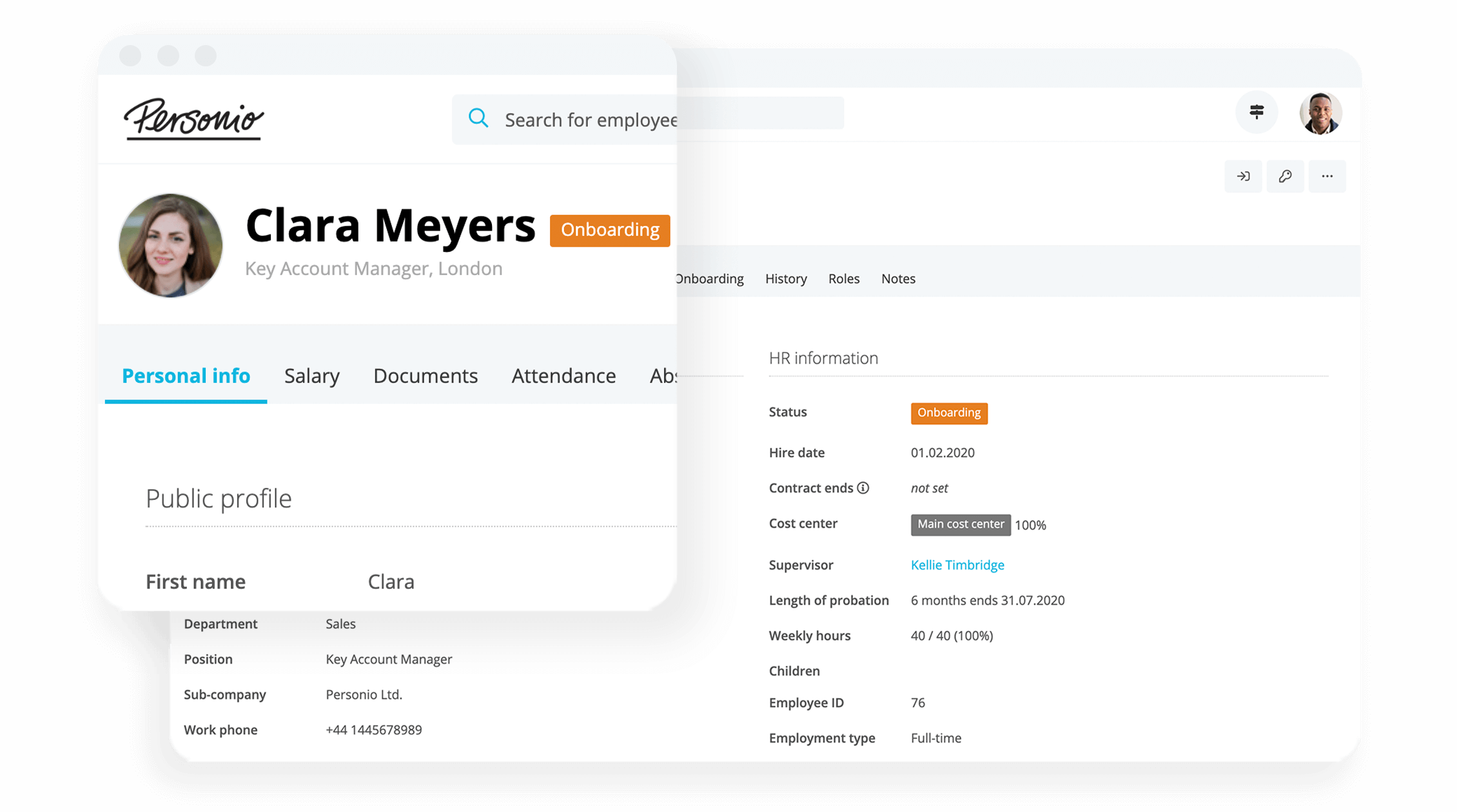You only get one chance to make a great first impression, which is why your organisation’s onboarding process for new employees is so critical. It can come to define an employee’s confidence in their role, how they fit into your culture, and even your business’ success down the road. In short, the process matters, a lot.
Want to start by downloading our free onboarding checklist? Click here to gain access.
Content
What Is The Onboarding Process?
Should You Update Your Onboarding Processes?
Creating An Onboarding Process: 5 Key Considerations
The Onboarding Process In Five Stages
Best Practices For Making Onboarding Processes Last
Building Better Onboarding Processes Today
What Is The Onboarding Process?
The onboarding process is the systematic integration of new employees into your culture and business operations. Simply put, it is how quickly you can get an employee to do their job, and do it well, while also feeling part of the company. For more on onboarding, in general, we’d recommend reading our complete guide to the topic right here.
Why Does The Onboarding Process Matter?
The onboarding process matters because it can have a tangible effect on organisational development and on the success of your business. That’s based on two critical and well-researched factors:
- Critical Timing
- Return On Investment
1. Critical Timing
The onboarding process happens during an absolutely crucial time for any employee. According to the Academy of Management Journal, the first 90 days for any employee is the most important time to establish relationships, understand processes, and influence business outcomes (even past that initial timeline).
2. Return On Investment
Additionally, a report from Forbes suggested that employees were 58% more likely to stay with an employee after three years if the onboarding process set them up for success. If you spend time sourcing, recruiting, and managing an employee, you want to make sure that they aren’t at risk of turning over early and will help your company succeed in the long run.
What Do New Employees Need From Onboarding?
Onboarding is a two-way street. It is an opportunity for employees to get familiar with the organisation, and for the organisation to build a relationship between themselves and the employee (therefore boosting retention rates and decreasing potential attrition down the road).
What Do New Employees Want From Onboarding?
New employees demand a lot from the onboarding process, and for good reason! They want to be trained, they want to know what is expected of them, and they want to fit into their new culture. They also want to be heard, which is why it is both important to consider what you want to communicate as a company, and what employees want from the process.
Ultimately, this means building an onboarding process and strategy that can stay engaged with managers, colleagues, and the company across multiple touchpoints. It should all come together, because it needs to come together!
Should You Update Your Onboarding Processes?
That depends on if it is working. If you don’t know, the first thing you may want to consider is sending out an engagement survey of some kind to take the temperature of your onboarding efforts. Ask employees:
- How did they find the onboarding process?
- Is there anything they would improve?
- Did the onboarding process prepare them for their roles?
- Did they feel more connected to company culture afterward?
- Was the process too long or too short?
Creating An Onboarding Process: 5 Key Considerations
Before you even begin, there are five things that any HR or People Team should consider:
| Consideration | Explained |
|---|---|
| Have A Concept | Think about the 'mission statement' or 'concept' behind your onboarding. What do you want to achieve? How do you want to help? Have a guiding premise in place first. |
| Clarify Roles & Responsibilities | Regarding things such as time-tracking and access cards, employee IDs, office stationery, computer, software, and access permissions. The same applies with regard to making the necessary data available for payroll accounting and opening an employee file. Allow for realistic lead times in your plan. |
| Compile Steps | Craft a checklist for HR, Managers, and Teams to cover all of the basic admin, technical, and social responsibilities. This will not only ensure that nothing is missed but will craft a routine that will make all future onboarding more consistent and more replicable. Everyone will be treated to the same experience. |
| Automate Wherever Possible | Think about all of the ways that you could automate your onboarding process through HR software. Could tasks be automatically assigned? Can a digital employee file be opened automatically? Save the time of your team and managers by thinking about how HR software can play a role here. |
Create Seamless New Starts
Automatically assign onboarding tasks to colleagues and new talent. Ensure new hires are set up for success from day one.
The Onboarding Process In Five Stages
There are five unique stages of the onboarding process, which include:
- Before the first day of work
- During the first day of work
- During the first week of work
- After the first week of work
- After four to eight weeks
Let’s dive into each and some of the particulars behind each step…
1. Before The First Day
The first step of the onboarding process happens even before onboarding begins. You could even make the case that it should still happen in the recruitment phase, as an employee’s onboarding may be determined both by the strength of your hiring team, but also by the strength of even the job posting alone.
That said, let’s skip ahead a bit and talk about what happens after an offer has been sent out. The first step of onboarding is to get the employment contract signed and set up. Following that, a digital personnel file should be created to house all of the important employee data at hand.
Following that, the onboarding process isn’t complete without keeping in touch with an employee. Notice periods vary across industries and roles, so you should maintain contact with a new employee so that their new role doesn’t feel foreign to them on their first day.
Best Practice: Have a company-wide event coming up before a new employee starts? Invite them! This can help speed up the onboarding process, especially the social element, while making a new employee feel included.
2. During The First Day
Your employee has arrived! Now, onboarding can really kick into high gear. During their first day, whether onboarding remotely or in the office, you should start things off with a welcome. That could be an in-person welcome, it could happen during a company or team-wide meeting, or it could simply happen over Slack or Microsoft Teams.
Then, show them around. Address all of the formalities that come with the role, introduce them to any company-specific tools (not role-specific ones, though, as we aren’t there yet), give them a good lay of the land — show them how the coffee machine works, where people take lunches, or even which restaurants employees tend to frequent.
Best Practice: A proper introduction should likely come from the top, which is why a new employee introduction email is so important. You can even automate sending them out using HR software to make intros a breeze.
3. During The First Week
Depending on how your company operates, and your overall size, the first week is likely going to be the most tailored part of your onboarding process. You could do it over two days, three days, or maybe even the entire week. That said, the first week should maintain some sort of combination between:
- Team Onboarding – Introducing a new employee to their team and how they will work together.
- Product Information – Whatever your business is selling or providing to clients or customers (it may include training).
- Legal Matters – Matters of privacy, security, or anything in between that employees need to know for compliance.
- Technology – Introducing all of the role-specific tools that an employee needs (ideally with automated provisioning).
- First Tasks – Giving a new employee their first project for completion to help ease them into the role.
- Team Spirit – Hosting an event or introducing a ‘buddy’ that will help your new employee feel welcome.
Your Step-by-Step to a Smoother Onboarding
Ensure great performance from day one. Download our onboarding checklist for a step-by-step guide to a perfect start.
4. After The First Week
The first day, and the first week, can be filled with a lot of information. So, following the first week, you should leave space to exchange ideas with a new employee and also to cover some additional topics. Don’t forget, a lot of this is going to be completely new, so you should back in more time, not less, for them to pick things up.
Following the first week, your onboarding process should focus on three key areas:
- First Impressions – Gauging how a new employee fills and if they ‘fit’ into the organisation (in their own opinion).
- Ancillary Policies – Introduce them to topics around taking leave, office-related, or anything you haven’t covered yet.
- Building Contacts – Focus on new employees meeting other people in the organisation and getting acquainted.
Best Practice: Consistent exchange is the lifeblood of the onboarding process. HR, managers, and teammates should keep in touch with new employees — which can be done through automated reminders and tasks in any good HR software.
5. After Four To Eight Weeks
The intensive portions of the onboarding process are complete! But, that doesn’t mean that your employee is out of the woods yet, as they haven’t passed that all-important 90-day mark. The final phase of the onboarding process is really all about feedback and gaining impressions from an employee.
This might include:
- Second Impressions – How they feel, week-by-week, about their new tasks and the ‘identity’ of their role.
- Gaining Feedback – Not only on their role but on the onboarding process (to help optimise things)
- Team Events – Ensure that your new employee is fitting into the ‘culture’ of your organisation through get-togethers.
- Development Opportunites – Are there already ways an employee could get better in their role?
Best Practices For Making Onboarding Processes Last
HR can be a strategic enabler when it comes to onboarding by making it a priority for the entire organisation. So, what are some best practices to help make the importance of great onboarding processes stick? Here are some ideas:
- The entire onboarding process needs to be natural, and not forced. Speak with team leads and managers about the importance of onboarding, and assist with further training if necessary.
- Find out whether new employees will require a tour of the company or training, and assist in organising these.
Include the executive leadership team: Mission meetings with all new employees are a good way to inform about the organisation’s targets, values, and culture; they also foster a sense of community. - Hold regular feedback meetings with the relevant department, managers, and new employees, where you can learn about any snags in the onboarding process and where you can iterate and make adjustments.
- Create a PowerPoint template for the onboarding presentation to new employees. The relevant department managers then need to add some additional information in time for their new team member’s first day.
Building Better Onboarding Processes Today
At a certain point, the goal for your organisation should be for onboarding to run smoothly. That way, whether you are welcoming one or 100 new employees, the process remains consistent for each and every one of them.
From an operational standpoint, that has never been easier than with HR software like Personio. It can allow you to focus on making a great impression and can augment it by making sure that all of your tasks run smoothly.
This leaves you with more time to work on your onboarding ‘mission statement,’ as well as on building social relationships with new employees. It’s seamless integrations thanks to seamless operations!
See for Yourself How Personio Can Help
Book Your Free Trial






